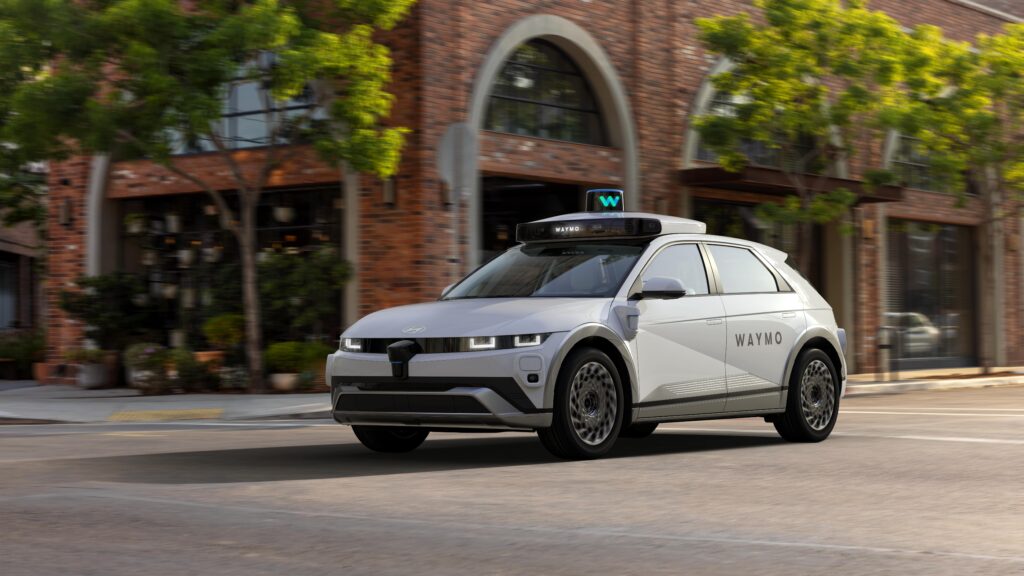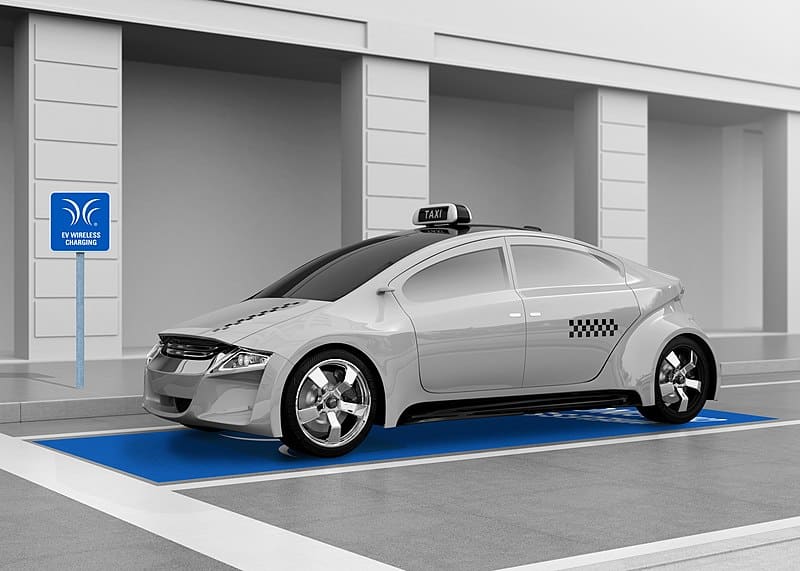Will Wireless EV Charging Become the New EV Charging Standard?
As autonomous vehicles gain traction quickly in the US and around the world, it would not make sense for teams of humans to be plugging them in. Therefore, the long-awaited move to Wireless EV Charging (WEVC) has gained a lot of traction recently.
Waymo, the undisputed robotaxi leader, raised $5.6B from outside investors this week. Waymo boasts the safest AV system. According to recent data, across more than 22 million miles driven by Waymo’s autonomous vehicles through June, the Waymo Driver demonstrated significantly improved safety outcomes over human drivers. Compared to human-driven vehicles, the Waymo Driver has been involved in 84% fewer crashes with airbag deployment, 73% fewer injury-causing crashes, and 48% fewer police-reported crashes. These figures underscore the potential of autonomous technology to enhance road safety, reducing the frequency and severity of accidents and supporting a safer transportation ecosystem.
Waymo’s autonomous vehicles are considered safer than competitors, due to their use of a more comprehensive sensor suite, which includes lidar, infrared detectors, and cameras, allowing for highly detailed monitoring of surroundings in various lighting and weather conditions. Additionally, Waymo employs professionals to remotely monitor their robotaxis, enabling them to intervene if the system detects a situation requiring human oversight. This proactive monitoring approach, coupled with robust sensor technology, allows Waymo to respond effectively to complex road scenarios, setting it apart from a camera-based approach and fully driver-independent system.

Wireless EV Charging (WEVC) Gains Traction
Wireless EV charging technology is emerging, which may make connectors obsolete, along with the cables that connect the EV to the charger. Wireless EV charging uses electromagnetic induction and coils, similar to wireless cell phone charging. A critical difference between wireless cell phone charging and wireless EV charging is that with wireless cell phone charging, the user places the phone on the charger. With most wireless EV charging, a receiver unit at the bottom of the vehicle receives electric power through wireless transmission. A pad on the ground transfers the power. In this type of charging, the energy travels through the air, known as an “air gap,” from the pad to the EV.
QKOIL Developed a Unique Above-The-Vehicle Wireless and Hands-Free EV Charging System
An innovative new company, EV Charging Solutions, LLC (QKOIL) has developed a unique above-the-vehicle wireless and hands-free EV charging system. Unlike traditional ground-based solutions, this system uses a transmitting coil that is mounted on an overhead cable or arm associated with a housing that can electromechanically move its location along a track above more than one electric vehicle and parking space.
The QKoil system is the only system that proposes automatically charging multiple fleet vehicles, which will be ideal for autonomous fleet vehicles such as Robotaxis. A key feature of the QKoil approach is that it eliminated ground pad trip points and associated equipment from being located near the ground where it can be vandalized. The QKoil system can also be adapted for warehouse use enabling electric robots moving about to be charged from overhead systems thereby eliminating the presence of charging equipment and cabling from the ground and walls in the workplace where space may be an issue.

Safety features and an app for tracking power
Don’t worry if your cat strolls across the pad while it operates; it won’t get fried. The built-in safety features will shut the charger down if the pad detects a living being or foreign object. The unit will remain off until the user inspects the pad and restarts the charger through the app. The app allows users to schedule charging times to optimal times, such as when electricity is cheaper due to time-of-use (TOU) rates.
Standards for wireless EV charging
Standards are essential so that every vehicle and every wireless EV charger will be compatible. SAE International (SAE), UL Solutions (UL), the International Electrotechnical Commission (IEC), and the International Organization for Standardization (ISO), created standards for wireless EV charging. At EVinfo.net, we are encouraged by the creation of the standards, which will avoid a mess similar to the current competing connector types in wired charging, NACS and CCS.
The efficiency of wireless EV charging
EV charging isn’t 100% efficient. Some power gets lost during the transfer from the grid to the vehicle. Standard EV chargers using cables and connectors vary from 80%-90% efficiency. Wireless EV charging has a similar efficiency, with percentages reported from leading companies between 80%-95%.
Leading wireless EV charging companies
Some of the leading companies in the wireless EV charging space are Electreon, WiTricity Corporation, HEVO, and WAVE Charging.
In August, Wave Charging announced that Venture Logistics and Cummins Inc. , in a partnership with the US Department of Energy, used WAVE’s innovative 500kW wireless inductive charger to power two Class 8 electric trucks and move cargo at one of its Midwest facilities.
WiTricity, a trailblazer in wireless charging for electric vehicles
In 2005, Professor Marin Soljačić and his team of physicists from the Massachusetts Institute of Technology (MIT) invented and patented a new technology for wireless electricity. WiTricity Corporation was founded in 2007, to implement Professor Soljačić’s work for the EV charging industry, and is headquartered in Watertown, MA.
Demonstration of wireless EV charging by WiTricity
In the video below, WDIV Local 4 News/ClickOnDetroit reporter Nick Monacelli experienced a demonstration of wireless EV charging at the Detroit Smart Parking Lab (DSPL) in Detroit, Michigan. The video features Pamposh Zutshi, WiTricity’s Senior Director of Product Management, who demonstrated parking an EV on a Witricity wireless EV charger and beginning the charging process. The console showed the positioning of the charger to the driver in real time, which made parking the vehicle in the proper place very easy.
Charging While Driving
Electreon is a company that provides wireless charging technology for electric vehicles (EVs) that allows them to charge while driving, parked, or idling. Electreon’s technology uses copper coils installed under the road to transfer energy to a receiver mounted under the EV. This process is based on magnetic resonance induction.
Electreon’s technology can charge any battery-powered vehicle, including cars, buses, and trucks.
In November 2023, Electreon, the City of Detroit, and MDOT unveiled the first public wireless charging roadway in the United States in Detroit, Michigan.
The future of wireless EV charging
Qualtrics released a study in June 2022, commissioned by WiTricity, that showed 96% of EV buyers want wireless charging. The study surveyed over 1,000 US residents who owned an EV or planned to buy one within two years. I believe wireless EV charging will become the new standard at some point. Wireless EV charging is easier and more convenient for the EV driver. Wireless charging is the perfect solution for autonomous vehicles, as driverless cars gain traction worldwide.

Electric Vehicle Marketing Consultant, Writer and Editor. Publisher EVinfo.net.
Services